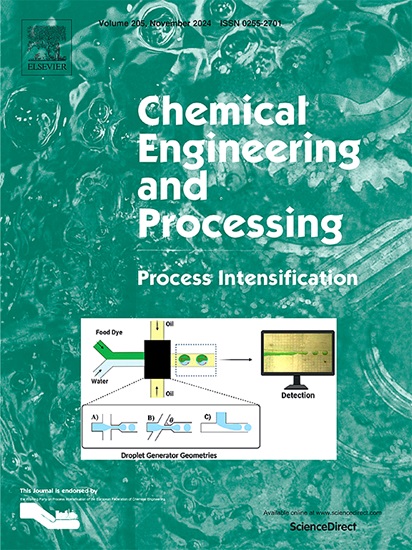Comprehensive assessment of energy, exergy, and environmental impacts of lemongrass oil-diesel blend with dimethyl and diethyl ethers in agricultural diesel engines
IF 3.8
3区 工程技术
Q3 ENERGY & FUELS
Chemical Engineering and Processing - Process Intensification
Pub Date : 2025-01-20
DOI:10.1016/j.cep.2025.110187
引用次数: 0
Abstract
The current study investigated the emission and performance characteristics along with fuel availability (exergy) and Energy of diesel, Lemongrass oil with dimethyl ether (DME) and diethyl ether (DEE) additives at volumetric ratios of 2.5 % and 5 % at different loads. The analysis is focused on shaft, cooling water, and exhaust availability. It was found that peak loads increase input availability. Peak load conditions maximized the gross work production because of fuel exergy in the combustion chamber. DEE 5 % with LGO25 had exergy efficiencies that were 69.54 % higher than diesel at 80 % load and entropy of 70.32 % lower entropy than diesel fuel 80 % load. The DEE and DME blend showed poor engine performance compared to diesel fuel as they produced higher cylinder pressure and temperature. It depicts that the LGO25 + DME 5 % fuel blend produced 33.3 % less Carbon monoxide, 6.1 % less Hydrocarbon and 28.01 % less smoke emission with respect to LGO25. The LGO25+DEE5 blends produced 11.25 % less Carbon monoxide emission, 21.05 % less Hydrocarbon emission along with 31.4 % less smoke emission against the LGO25 fueling operation. Moreover, Nitrogen Oxides (NOx) emissions were increased by 7.82 % and 26.89 % at LGO25 with DME5 % and LGO25+DEE5 % blends respectively when compared with LGO25 fueling mode.

求助全文
约1分钟内获得全文
求助全文
来源期刊
CiteScore
7.80
自引率
9.30%
发文量
408
审稿时长
49 days
期刊介绍:
Chemical Engineering and Processing: Process Intensification is intended for practicing researchers in industry and academia, working in the field of Process Engineering and related to the subject of Process Intensification.Articles published in the Journal demonstrate how novel discoveries, developments and theories in the field of Process Engineering and in particular Process Intensification may be used for analysis and design of innovative equipment and processing methods with substantially improved sustainability, efficiency and environmental performance.

 求助内容:
求助内容: 应助结果提醒方式:
应助结果提醒方式:


